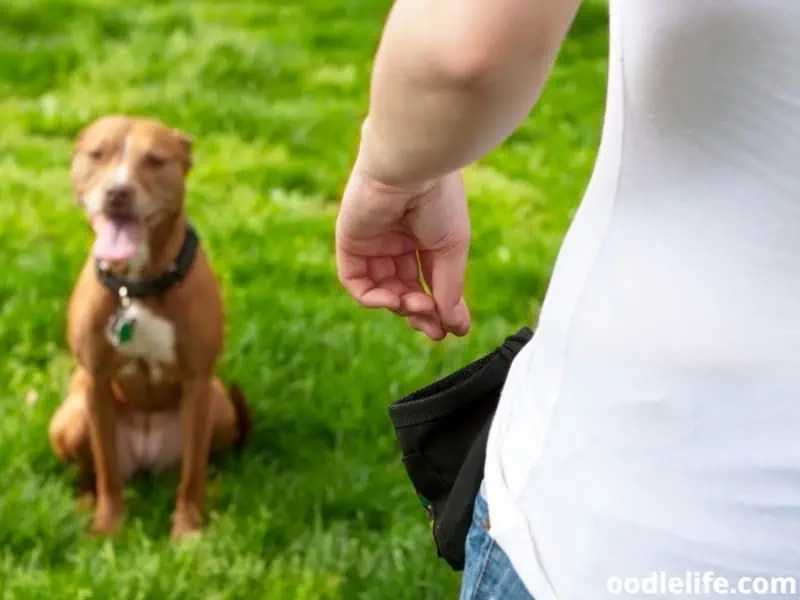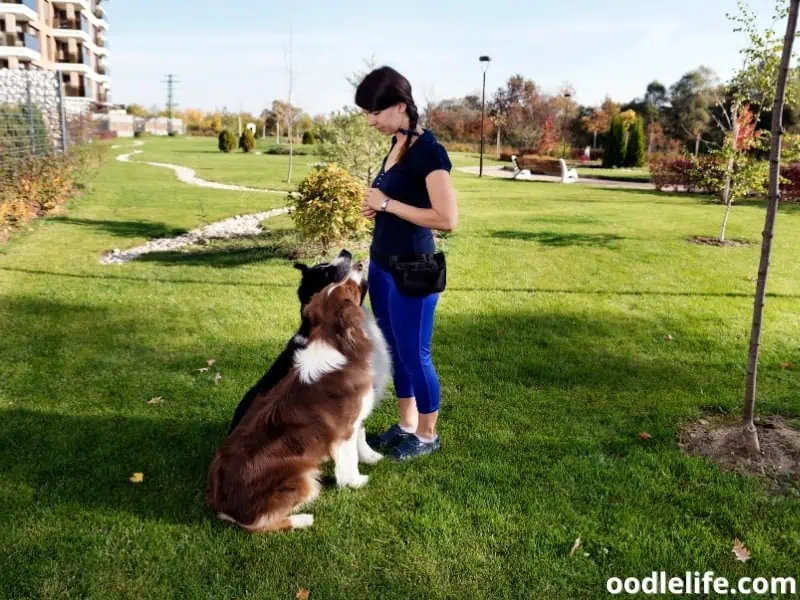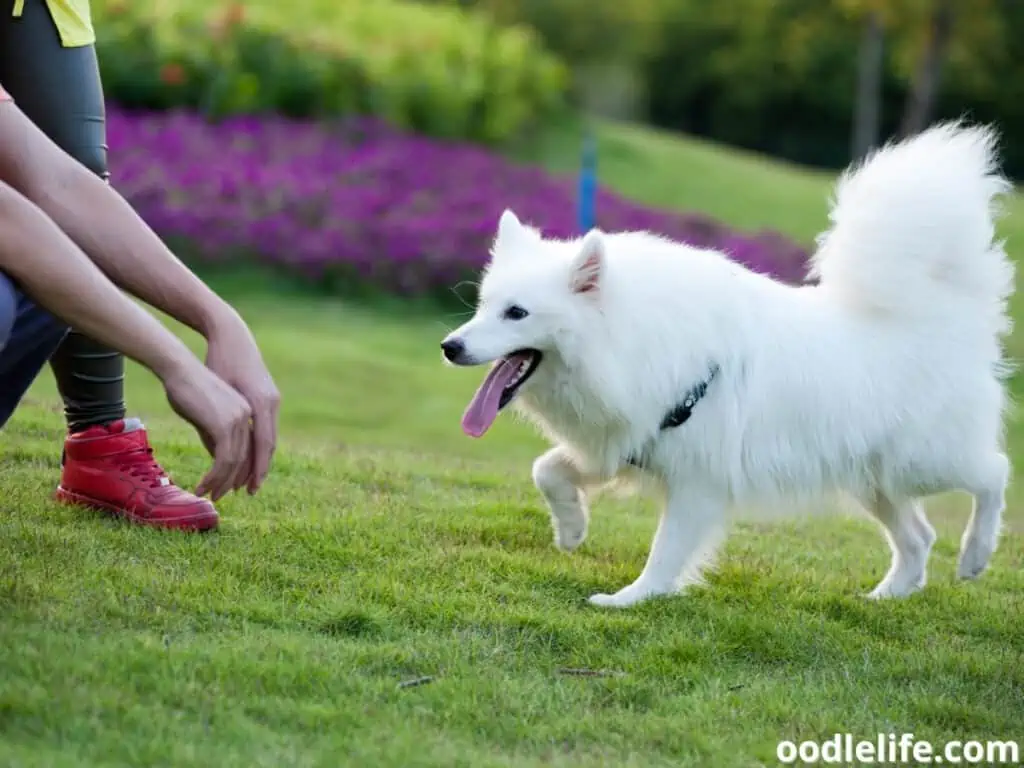Herding Behavior in Dogs Explained (What It Means?)
Herding behavior is the result of selective breeding, where people choose those particular traits to help with tasks like protecting, guarding, and herding livestock. Today, a lot of herding breeds are still used to help with livestock and perform a variety of work tasks.
If your dog has a strong herding instinct, there are a few things you can do to help him/her channel that energy in a positive way.

In this article, I’ll explain what herding behavior is, what dogs are more likely to demonstrate it, and how to manage it.
What Is Herding Behavior in Dogs?
As a dog lover, you may have noticed that some breeds have a natural tendency to chase and control the movement of other animals. This behavior is known as herding behavior, and it is a result of selective breeding.

Herding breeds are bred specifically for their strength, muscle mass, and carriage of the head and neck. They are also bred to be obedient and have a strong desire to please their master. These traits make them perfect for working tasks like herding livestock.
While herding behavior may seem like a fun game for your dog, it is important to remember that it is an instinctual behavior. It is important to provide appropriate outlets for this behavior, such as herding trials or agility courses, to prevent unwanted chasing of other animals.
Types of Herding Behaviors
As a dog owner, it’s important to understand the different types of herding behaviors that your furry friend may exhibit. These behaviors are often seen in breeds that were originally bred for herdings, such as Border Collies, Australian Shepherds, and Cattle Dogs.

Searching
One type of herding behavior is called “searching.” This is when a dog will actively look for animals to herd, often scanning the area with its eyes and nose. Another behavior is called “eyeing,” where a dog will stare intently at the animals they are trying to move, using their body language to communicate their intentions.
Stalking and Chasing
Stalking and chasing are also common herding behaviors. These involve the dog following the animals closely, using their natural predatory instincts to guide them. Pouncing and catching are the final stages of herding, where the dog will physically grab onto or nip at the animals to move them in the desired direction.
Different Breeds That Exhibit Herding Behavior
Owners are guaranteed to observe herding behavior in the following breeds:
| Breed | Description |
| Border Collie | One of the most well-known herding breeds, known for their intelligence and stamina. |
| Australian Cattle Dog | A strong, agile breed that excels at controlling and moving livestock. |
| Welsh Corgi | A small but powerful herding breed that originated in Wales. |
| Australian Shepherd | A versatile breed that is often used for herding, as well as for search and rescue and other tasks. |
| Shetland Sheepdog | A small but sturdy breed that is known for its herding abilities and its loyalty to its owner. |
| German Shepherd | A powerful and intelligent breed that is often used for herding and other tasks, such as search and rescue and police work. |
| Belgian Malinois | A strong and agile breed that is often used for herding and other tasks, such as search and rescue and military work. |
| Old English Sheepdog | A large and shaggy breed that is known for its herding abilities and its gentle nature. |
| Briard | A large and muscular breed that is known for its herding abilities and its protective nature. |
| Pembroke Welsh Corgi | A small but sturdy breed that is known for its herding abilities and its playful personality. |
Can All Dogs Be Taught To Herd?
While herding behavior may be more instinctive in certain breeds, such as Border Collies and Australian Cattle Dogs, all dogs have the potential to learn it.

Herding behavior is a modified form of predatory behavior, so it’s natural for dogs to want to chase and capture other animals. However, if not managed properly, herding behavior can become a problem. Herding dogs have a strong instinct to herd, and they may try to do so even when there’s no livestock present.
This can lead to chasing cars, bicycles, and even people.
Training Your Dog To Herd
Training your dog to herd is a valuable skill for those living on a ranch or working as a farmer. Herding is a natural behavior for many dogs, but it can be trained and perfected.

First, ensure your dog has a strong foundation in basic obedience commands such as sit, stay, come, and down. This will help with overall control and communication with your dog during the herding training process.
Next, introduce your dog to the animals that will be part of the herd. Allow your dog to interact with the animals in a positive way, such as through play or treats. This will help build a good relationship and trust between your dog and the herd animals.
Once your dog is comfortable around the herd animals, begin practicing herding by working with your dog to move the herd from one place to another. Start with small movements and gradually increase the distance and complexity of the herding tasks. Be patient and positive, and reward your dog for good behavior.
Remember, herding is not just about physical movement, but also about the mental connection between the dog and the herd. Be sure to focus on building this connection and communication during training.
Tips for Managing Your Dog’s Herding Behavior
The first thing you need to do to manage your dog’s hedging behavior is to identify the triggers that are causing your pup’s herding behavior. Common triggers can include things like animals, people, and moving objects, so monitoring your dog’s behavior around these types of things can help you determine when, where, and why your pup’s herding behavior is happening.

Here are some tips that you can use to help manage your pup’s herding behavior:
1. Exercise: Exercise plays an essential role in managing your pup’s herding behavior. Try taking your pup on more frequent walks and providing them with more interactive play time to help them release some of their pent-up energy.
2. Establish boundaries: Establish clear boundaries that your pup is not allowed to cross, and introduce behavioral commands like “sit” or “leave it” when they exhibit herding behavior around certain triggers.
3. Socialize: Socializing your pup with other animals and people can help reduce their desire to herd and chase. Make sure to always monitor these interactions and be prepared to step in if your pup’s behavior gets out of control.
4. Stimulate: Mental stimulation is just as important as physical exercise. Add toys to your pup’s environment that are designed to challenge their thinking, like puzzle toys or food dispensing toys, on days when your pup exhibits herding behavior.
5. Use Positive Reinforcement: Positive reinforcement training techniques can help manage your pup’s herding behavior. Reward them for good behavior and be sure to ignore them when they are herding.
Conclusion
Herding behavior in dogs is a natural and instinctive behavior that helps them to safely move around in groups and follow commands. Dogs that exhibit herding behavior often have a strong bond with their owners and may display a deep level of loyalty and trust, along with intelligence and empathy.
Understanding why your dog acts the way it does can help you create an even more meaningful and fulfilling relationship with your pet. That is why it is important to have an understanding of herding behavior in dogs and to use positive reinforcement, patience, and understanding when working with your pup.